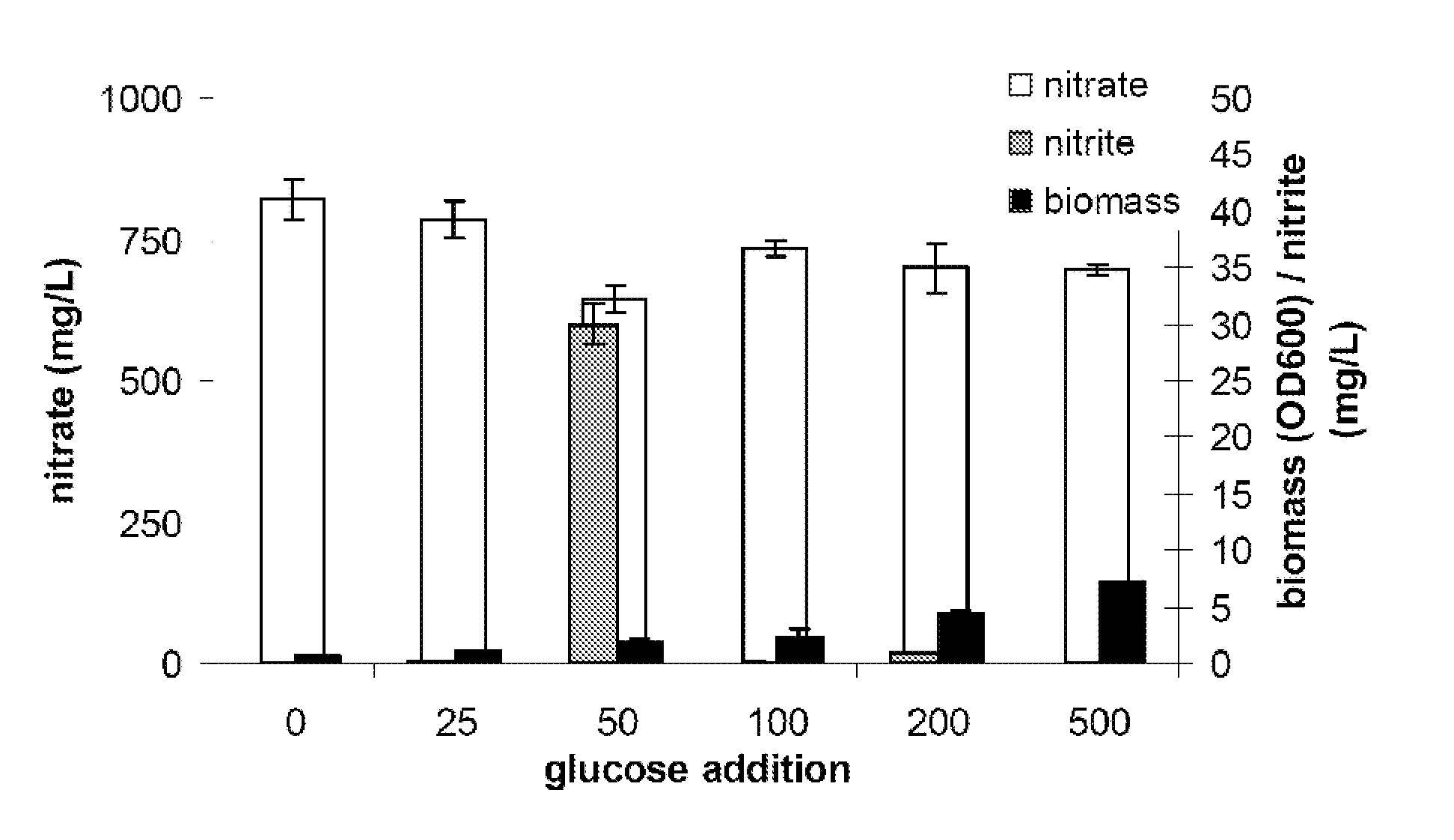[0019]The invention also relates to an
expression vector comprising a
nucleic acid construct as earlier defined. Preferably, an
expression vector comprises a
nucleic acid sequence as earlier defined, which is operably linked to one or more control sequences, which direct the production of an encoded polypeptide in a
probiotic. At a minimum control sequences include a
promoter and transcriptional and translational stop signals. An
expression vector may be seen as a
recombinant expression vector. An expression vector may be any vector (e.g. plasmic,
virus), which can be conveniently subjected to
recombinant DNA procedures and can bring about the expression of a
nucleic acid sequence encoding a polypeptide. Depending on the identity of a probiotic and / or
starter bacterium wherein this expression vector will be introduced and on the origin of a
nucleic acid sequence of the invention, the skilled person will know how to choose the most suited expression vector and control sequences.
[0046]Alternatively, the molybdopterin co-factor is added to the cultivation medium. The choice of a probiotic or starter bacterium will to a large extent depend upon the source of a
nucleic acid sequence of the invention. Depending on the identity of a probiotic or starter bacterium, the skilled person would know how to transform it with the construct or vector of the invention. A
nucleic acid sequence may be native for the chosen probiotic or starter bacterium. Alternatively, a nucleic acid sequence may be
heterologous for the chosen probiotic or starter bacterium. A nucleic acid sequence or polypeptide which has been subjected to any recombinant
molecular biology techniques to obtain a variant nucleic acid sequence or polypeptide will be considered as
heterologous for the host
cell it originated. Methods for transforming bacterial cells are known in the art and are for example described in “
Genetics and
Biotechnology of
Lactic Acid Bacteria”, Gasson and de Vos, eds., Chapman and Hall, 1994. In case a probiotic or starter bacterium is constructed through
genetic engineering such that a resulting recombinant host comprises only sequences derived from the same species as the host is, albeit in recombined form, the host is said to be obtained through “self-
cloning”. Hosts obtained through self-
cloning have the
advantage that there application in food (or pharmaceuticals) is more readily accepted by the public and regulatory authorities as compared hosts comprising foreign (i.e.
heterologous) nucleic acid sequences. The present invention thus allows the construction of self-cloned L. plantarum and other
lactobacillus hosts for food, pharmaceutical or
nutraceutical applications (see also de Vos, 1999, Int. Dairy J. 9: 3-10) and such self-cloned hosts are one further preferred embodiment of the invention.
[0047]Alternatively according to another preferred embodiment, a probiotic or starter bacterium is found functional in above-defined test. One choose to improve the functionality of said probiotic or starter bacterium by overexpressing, i.e. producing more of a (at least one) polypeptide encoded by a (at least one)
gene present in the
operon, and / or of a molybdopterin co-factor and / or of a nitrite
extrusion protein (or homologous thereof all as earlier defined herein) than the
parental cell this host
cell derives from produces when both cultured and / or assayed under the same conditions. Alternatively or in combination with former preferred embodiment, the functionality of said probiotic or starter bacterium is improved by conferring it a higher ability to reduce nitrate into nitrite than the
parental cell this host
cell derives from has when both cultured and / or assayed under the same conditions. In both cases, a native probiotic or starter bacterium was already able to reduce nitrate into nitrite (functional probiotic). However, in both cases (by overexpressing at least one polypeptide encoded by at least one
gene present in the
operon, and / or a molybdopterin co-factor and / or a nitrite
extrusion protein (or homologous thereof) or by conferring it a higher ability to reduce nitrate into nitrite), it is expected that the ability of the obtained probiotic or starter bacterium to reduce nitrate would be improved.
[0074]Another
advantage of applying these probiotic and / or starter
bacteria is that the nitrate initially present in a
food material or product is considerably reduced or even absent at the time of retail and consumption.
[0076]In another preferred embodiment, a cultivation method of the invention allows to obtain a probiotic or starter culture having improved characteristics as to its
biomass production and / or its ability to survive in the human or animal
gastrointestinal tract. According to a more preferred embodiment, the probiotic and / or starter bacterium hence resulting from this method has an improved
biomass production i.e. produces more
biomass than the
parental cell this cell derives from when both cultured and / or assayed under the same conditions.
 Login to View More
Login to View More  Login to View More
Login to View More 


